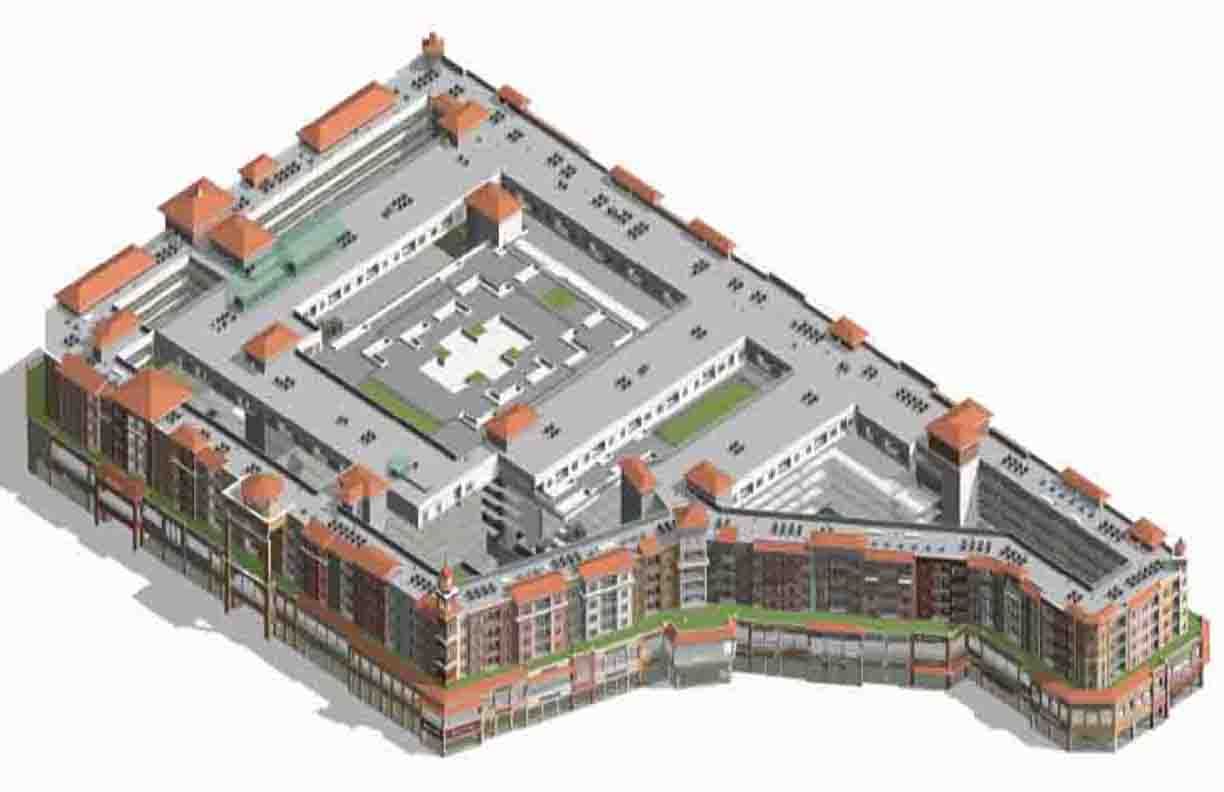Smart Building Technologies: How Consulting Can Elevate Your Infrastructure
Discover how smart building technologies improve efficiency, comfort, and ROI. Archline helps architects and engineers integrate IoT systems for sustainable, high-performance infrastructure.

In 2025, smart building technologies are no longer futuristic concepts — they are practical tools that directly impact a facility’s efficiency, resilience, comfort, and operating costs. From IoT-enabled sensors and cloud-based analytics to AI-driven HVAC optimization, these systems allow buildings to think, learn, and adapt in real time.
The global smart building market is projected to reach $570+ billion by 2030, driven by:
- Tighter energy codes and ESG reporting requirements
- Tenant demand for wellness and flexibility
- Utility incentives for peak demand reduction
- Cost savings from predictive maintenance and optimized operations
Yet, the complexity of integrating these technologies — across architecture, MEP, IT, and controls — often overwhelms project teams. That’s where consulting matters. At Archline, LLC, we partner with architects and engineers to design, specify, coordinate, and document smart building systems so they deliver on their promises without blowing budgets or schedules.
What Smart Building Technology Really Means
A smart building is not just “automated” — it’s a connected ecosystem. Each system (HVAC, lighting, access control, vertical transport, irrigation) produces real-time data, which feeds into an analytics platform. That platform uses algorithms or AI to optimize operations automatically and provide actionable insights for facility teams.
Core components:
- Sensors (temperature, humidity, occupancy, CO₂, light levels, vibration, etc.)
- Connected devices (smart meters, networked lighting fixtures, motorized dampers)
- Integration layer (BACnet/IP, Modbus, API connections)
- Analytics platform (cloud-based, often AI-enabled)
- User interface (dashboards for FMs, mobile apps for occupants)
The 10 Smart Building Technologies to Watch in 2025
1) IoT-Enabled Building Management Systems (BMS)
Benefit: Unified control and monitoring of HVAC, lighting, and other core systems from one interface.
Implementation:
- BACnet/IP backbone for interoperability
- Cybersecurity protocols from the start
- Granular point naming conventions in CD sets
Archline’s role: We coordinate MEP and IT scope, specify integration gateways, and detail point-to-point diagrams for commissioning clarity.
2) Demand-Controlled Ventilation (DCV)
Benefit: Reduces energy waste by matching outdoor air intake to occupancy.
Implementation:
- CO₂ or occupancy sensors in representative zones
- Sequences tied to ASHRAE 62.1 ventilation rates
- Integration with VAV boxes and air handlers
Archline’s role: We embed DCV setpoints in BAS sequences and verify zone coverage in the model.
3) Smart Lighting Systems
Benefit: Cut lighting energy use by 40–60% while improving visual comfort.
Implementation:
- Networked fixtures with addressable control
- Daylight harvesting tied to photo sensors
- Tunable white light for circadian support
Archline’s role: Lighting layouts in BIM coordinate with controls zones and daylight modeling.
4) Predictive Maintenance via IoT Sensors
Benefit: Detect equipment issues before failure, reducing downtime and repair costs.
Implementation:
- Vibration sensors on pumps/fans
- Thermal imaging for electrical gear
- AI-driven anomaly detection platforms
Archline’s role: Specify sensor placement in CDs, coordinate data integration with CMMS.
5) Energy Analytics Platforms
Benefit: Continuous commissioning and portfolio-wide benchmarking.
Implementation:
- Data ingestion from meters, submeters, and BMS
- Normalization for weather and occupancy
- Fault detection logic built in
Archline’s role: Ensure M&V points are designed, specified, and wired to support analytics.
6) Smart Water Management
Benefit: Track usage, detect leaks, and optimize irrigation in real time.
Implementation:
- Ultrasonic water meters with pulse outputs
- Flow sensors for cooling tower makeup/bleed
- Weather-based irrigation controllers
Archline’s role: Integrate submeters into BAS and spec automated shut-off valves.
7) Integrated Access Control & Occupancy Data
Benefit: Security plus space utilization insights.
Implementation:
- Badge or mobile credential readers linked to occupancy dashboards
- Privacy-compliant analytics for real estate planning
Archline’s role: Coordinate with security consultants and IT teams to tie data into BMS for HVAC/lighting control.
8) Smart Elevators & Vertical Transport
Benefit: Reduce wait times and energy use; optimize group dispatch.
Implementation:
- Destination dispatch systems
- Regenerative braking for energy recovery
Archline’s role: Align elevator data with building analytics to track usage patterns.
9) Digital Twin Technology
Benefit: A live, data-fed 3D model of the building for operations and maintenance.
Implementation:
- Link Revit model to IoT sensors and asset data
- Enable scenario planning for retrofits or load shifts
Archline’s role: Build maintainable models with metadata for FM teams.
10) Renewable Energy Integration & Optimization
Benefit: Maximize on-site generation value; reduce grid costs.
Implementation:
- Solar PV inverters connected to BMS
- Battery storage dispatch algorithms
Archline’s role: Coordinate renewable interconnection points, safety, and control strategies in design.
Case Studies: Smart Buildings in Action
Case 1: Dallas Medical Office Tower
Challenge: Owner wanted WELL-aligned IAQ and lower utility costs.
Solution: DCV in all patient areas, smart lighting with circadian controls, integrated water leak detection.
Results: 26% energy reduction year-one; leak detection prevented ~$80k in water damage.
Case 2: University Science Lab Retrofit
Challenge: High ventilation loads and aging controls.
Solution: IoT sensors for fume hood sash position, demand-based exhaust, predictive maintenance on lab fans.
Results: 38% HVAC energy cut; avoided $150k in emergency fan replacements.
Case 3: Corporate HQ Fit-Out
Challenge: Integrate wellness, sustainability, and flexibility for hybrid work.
Solution: Access control tied to HVAC/lighting, tunable white lighting, energy analytics dashboard for ESG reporting.
Results: 15% OPEX drop; occupant satisfaction score up 22%.
Implementation Roadmap
- Define goals early: Energy, wellness, security, flexibility.
- Audit existing systems: Identify upgrade vs. replace.
- Pick interoperable platforms: Avoid vendor lock-in.
- Coordinate disciplines: MEP, IT, security, interiors.
- Specify in detail: Point lists, sequences, cybersecurity.
- Commission rigorously: Verify each control point; train FM staff.
- Monitor & tune: Use analytics to sustain performance.
FAQs
Q1: Are smart building systems only for new builds?
A: No — retrofits can integrate IoT, analytics, and DCV incrementally.
Q2: How do we avoid cybersecurity risks?
A: Specify secure protocols, network segmentation, and regular updates.
Q3: Which system delivers the fastest ROI?
A: DCV and smart lighting often pay back in under 3 years.
Q4: How do smart buildings support LEED/WELL?
A: Many systems contribute directly to EA, WE, and EQ credits.
Q5: Is a digital twin worth it?
A: For complex facilities, yes — it improves O&M efficiency and asset planning.
Q6: Do these systems work in all climates?
A: Yes — strategies are tailored for local conditions.
Q7: Can data help with ESG reporting?
A: Absolutely — analytics platforms automate utility and IAQ reporting.
Q8: How does Archline help during construction?
A: We coordinate shop drawing reviews, sequence verification, and BAS integration testing.
The Archline Advantage
Smart building technology is powerful — but only if coordinated, documented, and integrated across all design and construction phases. Archline ensures your smart systems are buildable, code-compliant, and performance-ready, from concept to commissioning.
Call to Action:
Upgrade your next project with smart building strategies that deliver measurable results. Call
(214) 304-2850 or email
archline@archline.com. Explore:
- [Integrated Design Solutions – https://archline.com/services/integrated-design]
- [Smart Building Integration – https://archline.com/services/smart-buildings]
- [MEP/HVAC Design Support – https://archline.com/services/mep]
Local note: Based in Dallas, serving DFW (Uptown, Las Colinas, Plano, Frisco, Fort Worth) and nationwide.



